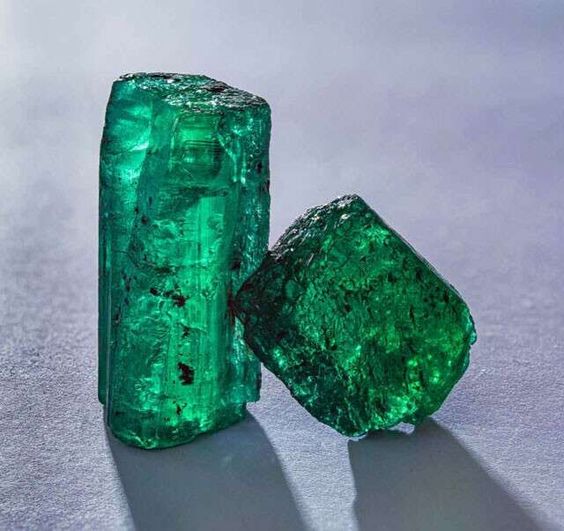How an emerald is formed and crystallized
One of the most common questions asked by those who want to know a little more about emeralds and their formation is, how does an emerald form? and how does it become the green gem we all know?
Both questions will be answered below so that those who care about the site of an emerald can understand more of its origin and physicochemical properties.
How does an emerald form?
The most common formation of an emerald crystal is in an elongated six-loiding prism, sometimes with stretch marks along its length. Natural emeralds form when beryllium, aluminum, silicon, oxygen and one or more of these elements mix influence in their characteristic green color thanks to the correct geological environment.
While this process can occur on metamorphic or sedimentary rocks, most emeralds are extracted in regions with methane rock environments, Brazil is one of those regions.
This gem of incalculable beauty is extracted from the beryl mineral, but it is the presence of chrome that is to blame for that dye so characteristic of the emerald, and the one that provides its green color so singular, that it is undoubtedly the quality that has enchanted the lovers of this precious stone.
Emerald formation in Colombia
In Colombia, the emeralds are located in the eastern Andes mountain range. Unlike Brazilian and African sources, Colombia has a sedimentary rock environment. Its emeralds are associated with hydrothermal veins.
As the Andes mountains formed, the layers of sediment combined and folded. When the rocks were forced to come together, they broke down, forming lines of geological faults.
Some of those fault lines provided ways for hot, mineral-rich fluids to rise through the rock layers. The mineral-rich fluids interacted with sedimentary rocks and thus grew emerald crystals.
Thanks to this type of training, Colombian emeralds are considered exceptional and unique in the world, not only for the high quality and intense color of the stones, but also for the characteristics of the place that lead to their formation.
Crystalization of emeralds
Crystalization or a crystalline system is a set of dot groups (a group of geometric symmetries with at least one fixed point). The seven most common crystalline systems are triculin, monoclinic, orthrombin, tetragonal, trigonal, hexagonal and cubic systems.
The emerald crystallizes in the hexagonal system, in prismatic hexagonal contour crystals. It has a typical green, more or less dark color, of a very particular tone, which distinguishes it from other stones of similar appearance. Sometimes the coloration is distributed irregularly, or in parallel with the main faces of the glass.
Among the different types of emerald, there are some with very peculiar characteristics, such as emerald trapiche. These are characterized by presenting inclusions arranged forming a drawing with six arms of different colors, well visible at the end of the glass.
Paula A. Bonilla
Social communicator and journalist from Sergio Arboleda University in Colombia. She is also a jeweler and is passionate about constantly learning about precious gems and national high jewelry.
Currently, she is working for one of Bogotá's most important jewelry stores, Emerald by Love. This jewelry store has over 40 years of experience and has 2 physical branches in the capital city of Colombia, located in the city center.


